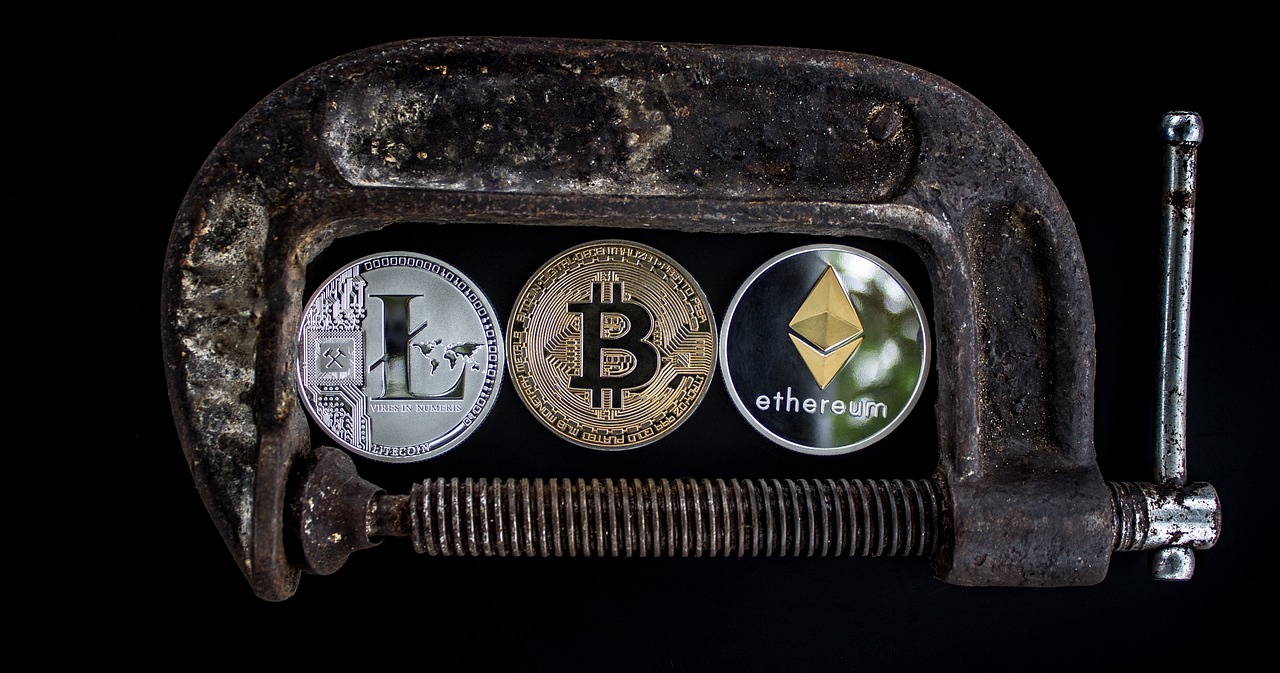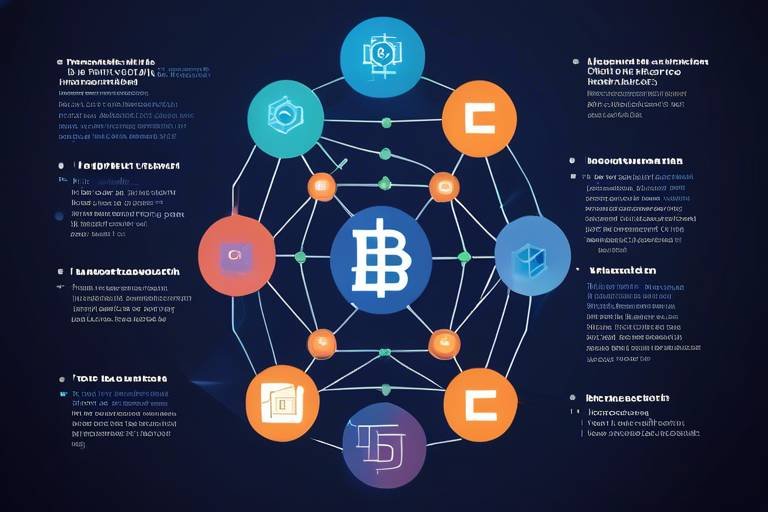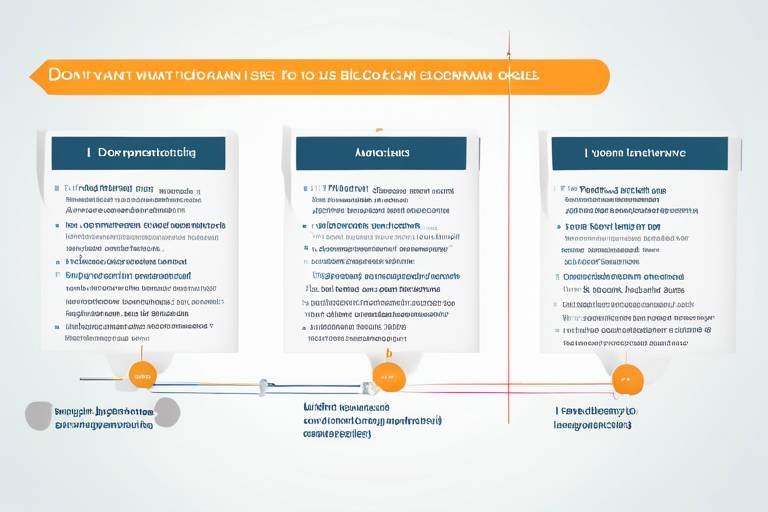Understanding Blockchain's Impact on Traditional Publishing
In recent years, the publishing industry has been undergoing a seismic shift, and at the heart of this transformation lies blockchain technology. But what exactly is blockchain, and why should we care about its impact on traditional publishing? Imagine a world where authors can connect directly with readers, where the complexities of publishing contracts are simplified, and where transparency reigns supreme. This isn’t just a dream; it’s becoming a reality thanks to the revolutionary potential of blockchain.
At its core, blockchain is a decentralized ledger system that records transactions across many computers in such a way that the registered transactions cannot be altered retroactively. This means that once something is recorded on the blockchain, it’s there for good, creating a permanent and tamper-proof record. This feature is crucial for the publishing industry, where issues like copyright infringement and royalty disputes have long plagued authors and publishers alike.
As we delve deeper into the implications of blockchain on traditional publishing, it’s essential to recognize how this technology can empower authors. Traditionally, writers have had to navigate a maze of agents, publishers, and distributors to get their work into the hands of readers. This often leads to a frustrating experience filled with delays and uncertainties. However, with blockchain, authors can publish their work directly, bypassing these traditional gatekeepers. This shift not only gives writers more control over their content but also fosters a more equitable landscape in which emerging voices can be heard.
Moreover, one of the standout features of blockchain technology is the use of smart contracts. These self-executing contracts automate agreements between authors and publishers, ensuring that terms are met without the need for intermediaries. Imagine a scenario where an author publishes a novel, and as soon as a sale is made, the smart contract automatically distributes the agreed-upon royalties to the author in real-time. This level of efficiency and transparency could revolutionize the way authors are compensated, making the entire publishing process smoother and more reliable.
However, it’s not all sunshine and rainbows. The implementation of blockchain in publishing faces several challenges. From technological barriers to regulatory hurdles and cultural resistance, the road to widespread adoption is fraught with difficulties. Yet, despite these challenges, the potential benefits are too significant to ignore. As we explore case studies of successful blockchain applications in publishing, we’ll see how innovative platforms are already paving the way for a new era in the industry.
In conclusion, the impact of blockchain on traditional publishing is profound and multifaceted. As we look to the future, it’s clear that this technology holds the key to unlocking new possibilities for authors, publishers, and readers alike. So, buckle up and get ready for a thrilling ride into the future of publishing!
- What is blockchain? Blockchain is a decentralized digital ledger that records transactions across multiple computers securely.
- How does blockchain empower authors? It allows authors to publish directly to readers, bypassing traditional publishing gatekeepers.
- What are smart contracts? Smart contracts are self-executing contracts with terms directly written into code, automating agreements and ensuring transparency.
- What challenges does blockchain face in publishing? Key challenges include technological barriers, regulatory issues, and cultural resistance to change.
- What is the future of publishing with blockchain? The future holds potential innovations that could reshape market dynamics, enhance author visibility, and improve reader engagement.

The Basics of Blockchain Technology
When we talk about blockchain technology, it's essential to start with the fundamentals. At its core, blockchain is a decentralized ledger system that records transactions across multiple computers. This means that no single entity has control over the entire chain, making it incredibly secure and transparent. Imagine a digital notebook that everyone can see, but no one can erase or alter the past entries. Each entry, or block, is linked to the previous one, forming a chain. This structure ensures that once data is added, it cannot be changed without the consensus of the network. In the context of publishing, this has profound implications.
The technology operates on a principle called distributed consensus. This means that all participants in the network validate transactions before they are added to the blockchain. Picture a group of friends who decide to keep track of their shared expenses. Instead of one person managing the finances, they all have a copy of the ledger, and every time someone spends money, they all need to agree on the entry. This collaborative approach not only enhances trust among users but also reduces the risk of fraud.
Now, let’s break down some key components of blockchain technology:
- Nodes: These are the computers that participate in the blockchain network. They store copies of the entire blockchain and validate new transactions.
- Blocks: Each block contains a list of transactions, a timestamp, and a reference to the previous block, which ensures the chain's integrity.
- Cryptography: Blockchain uses advanced cryptographic techniques to secure data and control the creation of new blocks. This makes it nearly impossible for unauthorized parties to tamper with the information.
Understanding these concepts is crucial for grasping how blockchain can revolutionize the publishing industry. The potential for transparency and security in publishing is immense. Authors can track their works, see how they are being used, and ensure they are compensated fairly. Publishers can streamline operations, reduce costs, and build trust with their authors and readers.
As we dive deeper into the implications of blockchain in publishing, it’s vital to recognize that this technology is not just about innovation; it’s about empowerment. By removing traditional gatekeepers, authors gain more control over their work, and readers can directly support the creators they love. This shift could lead to a more equitable publishing landscape where creativity flourishes.
In conclusion, understanding the basics of blockchain technology is the first step in appreciating its transformative potential. As we explore further, we'll see how these foundational principles apply to real-world scenarios in the publishing industry.
- What is blockchain technology? Blockchain is a decentralized digital ledger that records transactions across multiple computers, ensuring security and transparency.
- How does blockchain ensure security? By using cryptographic techniques and a consensus mechanism among network participants, blockchain makes it nearly impossible to alter past records.
- What are the benefits of blockchain for authors? Blockchain allows authors to publish directly, track sales, and receive fair compensation without intermediaries.

Decentralization and Author Empowerment
In the traditional publishing world, authors often find themselves at the mercy of gatekeepers—agents, publishers, and distributors—who control access to audiences and revenue streams. This system can feel like a labyrinth, where only a select few make it through to the other side, leaving many talented writers in the shadows. However, with the rise of blockchain technology, we are witnessing a seismic shift that empowers authors like never before. Imagine a world where writers can connect directly with their readers, bypassing the traditional barriers that have long dictated the publishing landscape. This is the promise of decentralization.
Decentralization, at its core, means that power is distributed rather than concentrated in the hands of a few. In the publishing context, this translates to authors having greater control over their work, their creative processes, and their financial outcomes. With blockchain, authors can publish their work directly on decentralized platforms, allowing them to retain ownership and control over their intellectual property. This shift not only fosters a fairer environment but also encourages a diverse range of voices to emerge, enriching the literary landscape.
One of the most exciting aspects of this new paradigm is the ability for writers to engage with their audience in real-time. Through blockchain-based platforms, authors can receive immediate feedback, build communities around their work, and even crowdsource funding for their projects. This level of interaction creates a sense of connection that was often missing in the traditional publishing model. Authors are no longer just passive participants; they become active players in their own narratives.
Moreover, the financial implications of decentralization are profound. By cutting out intermediaries, authors can significantly increase their earnings. Traditional publishing often involves complex royalty structures that can take months to settle. In contrast, blockchain technology allows for transparent and instantaneous payment systems. This means authors can receive their earnings in real-time, ensuring they are compensated fairly for their work. Imagine getting paid the moment someone buys your book—no more waiting around for checks to clear!
However, this empowerment comes with its own set of challenges. While the potential is enormous, authors must also navigate the complexities of new technology and the evolving landscape of digital rights management. Educating themselves about blockchain and its applications is crucial for writers looking to take full advantage of these opportunities. But for those willing to embrace the change, the rewards can be life-changing.
In conclusion, decentralization through blockchain technology is not just a buzzword; it's a revolution that empowers authors to reclaim their voices and their rights. By moving away from traditional gatekeepers and embracing a more equitable publishing model, writers can not only enhance their creative freedom but also ensure that they receive the recognition and compensation they deserve. The future of publishing is here, and it’s more inclusive than ever.

Smart Contracts in Publishing
Imagine a world where authors no longer have to wait months to see their earnings from a book release. This is where smart contracts come into play, revolutionizing the way agreements are made and executed in the publishing industry. A smart contract is essentially a self-executing contract with the terms of the agreement directly written into code. It operates on a blockchain, ensuring that once the conditions are met, the contract is executed automatically without the need for intermediaries.
In the traditional publishing landscape, authors often find themselves at the mercy of publishers regarding payment schedules and royalty distributions. With smart contracts, authors can regain control over their earnings. For instance, the moment a book is sold, the smart contract can automatically calculate the royalties due to the author and transfer the funds directly to their wallet. This not only enhances transparency but also significantly reduces the chances of disputes over payments.
Here’s how smart contracts can streamline the publishing process:
- Automated Payments: No more waiting for checks in the mail. Payments are made instantly, ensuring authors receive their fair share as soon as their work is sold.
- Clear Terms: All terms of the agreement are coded into the contract, leaving no room for misinterpretation. Authors and publishers can clearly see their rights and obligations.
- Reduced Costs: By eliminating the need for intermediaries, smart contracts can lower transaction costs, allowing more funds to go directly to the creators.
Furthermore, smart contracts can also facilitate collaborations among authors, editors, and illustrators. For example, if multiple parties are involved in a project, a smart contract can be set up to distribute payments based on predefined milestones. This ensures that everyone involved is compensated fairly and promptly, fostering a collaborative environment.
However, it's essential to recognize that while smart contracts offer numerous advantages, they also come with challenges. The technology is still relatively new, and many authors may not be familiar with how it works. Additionally, there are concerns regarding the legal enforceability of smart contracts, as laws surrounding digital agreements are still evolving. Despite these hurdles, the potential for smart contracts to reshape the publishing industry is immense, paving the way for a more efficient and equitable system.
In conclusion, smart contracts represent a significant leap forward in how publishing agreements are executed. By leveraging this technology, authors can enjoy quicker payments, clearer agreements, and a more equitable relationship with publishers. As the industry continues to evolve, embracing smart contracts could be the key to unlocking a more transparent and efficient publishing ecosystem.

Royalties and Payment Distribution
When it comes to the world of publishing, one of the most significant concerns for authors is ensuring they receive fair compensation for their hard work. Traditional publishing models often leave authors in the dark about how much they earn from their creations, with complex royalty structures that can feel like navigating a maze. But here’s where blockchain technology steps in like a superhero, ready to save the day! By utilizing a decentralized ledger, authors can track their sales and royalties in real-time, making the entire process much more transparent and efficient.
Imagine this: every time a reader purchases a book, that transaction is recorded on the blockchain. This means authors can see exactly how many copies of their work have sold and how much money they are owed, all without having to wait for quarterly statements that may or may not be accurate. This level of transparency not only builds trust between authors and publishers but also ensures that authors are paid promptly. No more waiting months to see if your book is a hit or a flop!
Moreover, blockchain technology allows for smart contracts, which automatically execute payment distributions based on predefined conditions. For instance, if an author agrees to a 70% royalty rate, the smart contract can ensure that 70% of the sale price is instantly sent to the author’s wallet the moment a purchase is made. This eliminates the need for intermediaries, which often take a cut of the profits, and ensures that authors receive a fair share of their earnings. The table below illustrates a simplified example of how royalty distribution works on a blockchain platform:
| Transaction Type | Sale Price | Royalty Rate | Author's Earnings |
|---|---|---|---|
| Book Sale | $20.00 | 70% | $14.00 |
| eBook Sale | $10.00 | 70% | $7.00 |
This streamlined payment process not only benefits authors but also encourages them to produce more content. Knowing they will be compensated fairly and quickly can motivate writers to experiment with new ideas and genres, ultimately enriching the literary landscape. In a world where every second counts, having a system that pays authors in real-time is a game-changer.
However, it’s important to note that while blockchain technology offers a promising solution to royalty distribution, it’s not without its challenges. Authors must still navigate the complexities of integrating blockchain into existing publishing systems, and there are hurdles related to technology adoption and regulatory compliance. Nevertheless, the potential benefits far outweigh the challenges, and as the industry evolves, we are likely to see more authors embracing blockchain for its transparency and efficiency.
- What is blockchain technology? Blockchain is a decentralized digital ledger that records transactions across many computers securely and transparently.
- How does blockchain improve royalty distribution? It allows for real-time tracking of sales and automated payments through smart contracts, ensuring authors are paid fairly and promptly.
- Are there any downsides to using blockchain in publishing? Yes, challenges include technological integration, regulatory issues, and the need for industry-wide adoption.
- Can all authors use blockchain for their publications? While many platforms are emerging, authors should research and choose a blockchain solution that fits their needs.

Copyright Protection
In the realm of publishing, is a critical concern for authors, as it safeguards their creative works from unauthorized use and theft. With the advent of blockchain technology, a new dawn is emerging for copyright management. Imagine a world where every piece of writing, art, or music is securely registered on a decentralized ledger, making it virtually impossible for anyone to claim ownership of someone else's work without proper attribution. This is the promise that blockchain holds, and it’s revolutionizing how we think about intellectual property rights.
At its core, blockchain offers a transparent and immutable record of ownership. Each time a work is created, it can be timestamped and stored on the blockchain, creating a permanent digital fingerprint. This not only establishes proof of authorship but also provides a clear trail of ownership that can be easily verified. For authors, this means they can confidently share their work, knowing that their rights are protected and that they can prove their ownership if disputes arise.
Moreover, the use of smart contracts within blockchain can automate the process of copyright registration. Authors can set specific terms and conditions for how their work can be used, and these contracts execute automatically whenever someone wishes to use the content. This reduces the need for intermediaries, such as lawyers or publishing houses, thus streamlining the entire process. Imagine a musician who wants to license their song; instead of negotiating contracts back and forth, a smart contract can handle everything automatically, ensuring that the artist gets paid fairly and promptly.
However, while the advantages of blockchain for copyright protection are compelling, there are also challenges to consider. The technology is still relatively new, and many authors may not be familiar with how to leverage it effectively. Furthermore, there are regulatory hurdles that need to be addressed, as copyright laws vary significantly across different jurisdictions. It’s essential for authors to understand both the opportunities and the limitations presented by blockchain technology.
In conclusion, blockchain technology is poised to transform copyright protection in the publishing industry. By providing a secure, transparent, and efficient way to manage intellectual property rights, it empowers authors and fosters a more equitable landscape for creative expression. As this technology continues to evolve, it will be fascinating to see how it shapes the future of publishing and protects the rights of creators around the globe.
- How does blockchain protect copyright?
Blockchain creates an immutable record of ownership, allowing authors to timestamp and register their works securely. - What are smart contracts?
Smart contracts are self-executing contracts with the terms of the agreement directly written into code, automating processes like licensing and payments. - Are there challenges to using blockchain for copyright?
Yes, challenges include the need for regulatory clarity and the necessity for authors to understand how to utilize the technology effectively.

Challenges of Implementing Blockchain
While blockchain technology offers a plethora of opportunities for revolutionizing the traditional publishing industry, it also comes with its fair share of challenges. One of the primary hurdles is the technological barrier. Many authors and publishers may lack the technical expertise needed to implement blockchain solutions effectively. This could lead to a situation where the potential benefits of blockchain remain untapped simply because the stakeholders do not understand how to utilize it. Furthermore, the existing infrastructure of traditional publishing is deeply entrenched, and transitioning to a new system can be daunting.
Another significant challenge is the regulatory landscape. Blockchain operates in a largely unregulated environment, which can be both a blessing and a curse. On one hand, this allows for innovation and flexibility; on the other, it creates uncertainty. Publishers and authors may be hesitant to adopt blockchain technology if they are unsure how it will be viewed by regulators or how existing laws will apply. This uncertainty can stifle innovation and slow down the adoption process.
Moreover, there is a cultural resistance to change within the publishing industry. Many established publishers have operated under the same business models for decades, and the notion of adopting a decentralized system can be met with skepticism. This is compounded by the fear of disruption—traditional publishers worry that blockchain could undermine their business models, leading to job losses and a shift in power dynamics. The reluctance to embrace change can create a significant barrier to the widespread adoption of blockchain technology.
Additionally, the issue of interoperability cannot be overlooked. Different blockchain platforms may not be compatible with one another, which could lead to fragmentation in the industry. If authors and publishers adopt various blockchain solutions that do not communicate effectively, it could create confusion and inefficiencies, ultimately negating the benefits that blockchain intends to provide.
Lastly, we must consider the environmental impact of blockchain technology. Many blockchain networks, especially those utilizing proof-of-work mechanisms, consume significant amounts of energy. As sustainability becomes a more pressing concern for consumers and businesses alike, the environmental footprint of blockchain could pose a challenge to its acceptance in the publishing industry. Stakeholders will need to find ways to mitigate these impacts to ensure that the adoption of blockchain aligns with broader societal values.
In conclusion, while blockchain presents exciting opportunities for the publishing industry, the challenges of implementing this technology cannot be ignored. Addressing these barriers will be crucial for ensuring that the benefits of blockchain can be fully realized. Stakeholders must work collaboratively to navigate the complexities of technology, regulation, culture, interoperability, and sustainability to create a more equitable and efficient publishing landscape.
- What are the main challenges of implementing blockchain in publishing?
The main challenges include technological barriers, regulatory uncertainty, cultural resistance, interoperability issues, and environmental concerns.
- How can authors benefit from blockchain technology?
Authors can benefit from direct publishing opportunities, transparent royalty distribution, and enhanced copyright protection through blockchain.
- Are traditional publishers adopting blockchain technology?
Yes, some traditional publishers are exploring blockchain technology to adapt to the changing landscape and enhance their operations.

Case Studies of Blockchain in Publishing
As we dive into the realm of blockchain's transformative power in publishing, it's essential to look at real-world examples that illustrate its potential. Various innovative projects have emerged, showcasing how blockchain technology is reshaping the landscape for authors, publishers, and readers alike. One notable example is the platform OpenBazaar, which allows authors to sell their work directly to readers without intermediaries. This peer-to-peer marketplace leverages blockchain to ensure that transactions are secure and transparent, providing an avenue for authors to retain more of their earnings.
Another fascinating case is the Publica platform, which uses blockchain to create a decentralized publishing ecosystem. Authors can publish their books as digital assets on the blockchain, allowing them to manage their rights and royalties effectively. This model not only empowers authors but also enhances reader engagement by offering unique features like limited editions and the ability to participate in the book's development through feedback mechanisms.
Furthermore, a project called Po.et aims to revolutionize the way content creators manage their intellectual property. By utilizing blockchain technology, Po.et provides a secure digital ledger for publishing metadata, ensuring that authors have verifiable ownership and timestamped records of their work. This not only simplifies copyright claims but also facilitates a more transparent ecosystem for content distribution.
To better understand the impact of blockchain in publishing, let's look at some key metrics from these case studies:
| Platform | Key Features | Benefits |
|---|---|---|
| OpenBazaar | Peer-to-peer marketplace | Higher earnings for authors, no intermediaries |
| Publica | Decentralized publishing ecosystem | Author control over rights and royalties |
| Po.et | Secure digital ledger for metadata | Verifiable ownership, simplified copyright claims |
These case studies highlight a significant trend: as blockchain technology matures, it is paving the way for new publishing models that prioritize author autonomy and reader engagement. The shift from traditional publishing methods to decentralized platforms not only enhances transparency but also fosters a more equitable environment for all stakeholders involved.
As the publishing industry continues to evolve, it's clear that blockchain technology will play a crucial role in shaping its future. By examining these case studies, we can glean valuable insights into how authors and publishers can harness this technology to create innovative solutions that benefit everyone in the ecosystem.
- What is blockchain technology?
Blockchain is a decentralized digital ledger that records transactions across many computers in a way that the registered transactions cannot be altered retroactively. - How does blockchain empower authors?
It allows authors to publish directly to readers, cutting out intermediaries and retaining more control over their work and earnings. - What are smart contracts?
Smart contracts are self-executing contracts with the terms of the agreement directly written into code, ensuring transparency and efficiency in transactions. - Are there challenges to implementing blockchain in publishing?
Yes, there are technological, regulatory, and cultural obstacles that need to be addressed for widespread adoption.

Innovative Publishing Platforms
As the publishing industry evolves, innovative platforms are emerging, leveraging blockchain technology to reshape how authors, readers, and publishers interact. These platforms are not just about technology; they are about creating a more democratic and accessible publishing environment. Imagine a world where authors can connect directly with their readers without the need for traditional gatekeepers—this is the promise of blockchain.
One of the most exciting aspects of these platforms is their ability to foster community engagement. For instance, platforms like Publish0x allow authors to earn cryptocurrency for their content while readers can tip their favorite writers. This creates a symbiotic relationship where both parties benefit. Readers are incentivized to engage more deeply with the content, while authors receive direct rewards for their work. It's like a digital tip jar that encourages creativity and interaction.
Another notable platform is Steemit, which operates on a similar principle. Users can earn rewards through content creation and curation, effectively turning the traditional publishing model on its head. With Steemit, authors are not just passive participants; they become active stakeholders in their success. The transparency of blockchain ensures that every contribution is recognized and rewarded fairly, which is a significant departure from the traditional royalty system where many authors feel shortchanged.
Moreover, blockchain technology enables new publishing models that prioritize authenticity and transparency. For example, platforms like Publica allow authors to publish their books as NFTs (non-fungible tokens), providing them with a unique way to sell their work while retaining ownership and control. This not only empowers authors but also gives readers a sense of ownership over the content they consume. Imagine owning a piece of digital literature that is verifiably unique—this is the future that blockchain promises.
However, it's essential to recognize that these platforms are still in their infancy. While the potential is enormous, challenges such as user adoption, technological literacy, and regulatory hurdles remain. Yet, the momentum is undeniable, and as more authors and readers embrace these innovative solutions, we may witness a significant shift in the publishing landscape.
In conclusion, innovative publishing platforms powered by blockchain technology are paving the way for a more equitable and engaging publishing environment. They are not merely tools; they are transformative forces that empower authors, enrich reader experiences, and challenge the status quo of traditional publishing. As we continue to explore the possibilities, one thing is clear: the future of publishing is bright, and it is being written in real-time.

Traditional Publishers Adapting to Change
As the digital landscape evolves, traditional publishers find themselves at a crossroads, grappling with the disruptive force of blockchain technology. The question looms large: how do they adapt to a world where authors can directly reach their readers, bypassing the age-old gatekeeping mechanisms? The answer lies in innovation, collaboration, and a willingness to embrace change. Many established publishers are not merely resisting this shift; they are actively seeking to integrate blockchain into their operations, recognizing that adaptation is not just beneficial but essential for survival.
One of the primary strategies being employed by traditional publishers is the incorporation of hybrid publishing models. These models blend traditional publishing with modern digital practices, allowing authors a more significant stake in their work while still benefiting from the resources and expertise of established publishers. For instance, some publishers are offering self-publishing services alongside their traditional offerings, giving authors the choice to control their publishing journey. This approach not only empowers authors but also attracts a new generation of writers who may have previously felt alienated by conventional publishing practices.
Moreover, publishers are investing in partnerships with blockchain startups. By collaborating with tech-savvy companies, traditional publishers can leverage new technologies to enhance their publishing processes. These partnerships often focus on developing smart contracts that automate agreements and streamline royalty payments. Imagine a world where an author's earnings are calculated and distributed in real-time, eliminating the long waits and uncertainties that plague the current system. This not only builds trust with authors but also positions publishers as forward-thinking entities in a rapidly changing market.
Furthermore, traditional publishers are exploring the use of blockchain for data analytics. By harnessing the power of decentralized ledgers, they can gain insights into reader preferences and behavior. This data can inform marketing strategies, helping publishers to tailor their offerings to meet reader demands more effectively. In essence, blockchain provides a treasure trove of information that can be used to refine publishing strategies and enhance reader engagement.
However, the transition is not without its challenges. Many traditional publishers face cultural resistance to adopting new technologies. The publishing industry has long been rooted in established practices, and change can be met with skepticism. Addressing these concerns requires clear communication about the benefits of blockchain, not just for the publishers but for the authors and readers as well. Education and training will play crucial roles in facilitating this transition, ensuring that all stakeholders understand how to navigate the new landscape.
In conclusion, while the rise of blockchain technology presents challenges, it also opens up a realm of opportunities for traditional publishers. By embracing change, fostering innovation, and prioritizing collaboration, they can not only survive but thrive in this new era of publishing. The key lies in their ability to adapt and evolve, ensuring they remain relevant in a world where the lines between authors, publishers, and readers are increasingly blurred.
- How is blockchain technology changing the publishing industry? Blockchain technology is enabling direct publishing for authors, enhancing transparency in royalty payments, and providing secure copyright protection.
- What are the benefits for authors using blockchain? Authors can retain greater control over their work, receive real-time payments, and ensure their intellectual property is securely protected.
- Are traditional publishers embracing blockchain? Yes, many traditional publishers are adapting by incorporating blockchain into their operations, exploring hybrid models, and forming partnerships with tech startups.
- What challenges do publishers face in adopting blockchain? Cultural resistance, technological barriers, and the need for education and training are some of the challenges traditional publishers encounter.

The Future of Publishing with Blockchain
As we look ahead, the publishing industry stands on the brink of a revolution, largely driven by the integration of blockchain technology. Imagine a world where authors can publish their works without the constraints imposed by traditional publishers, where readers have direct access to their favorite authors, and where every transaction is transparent and secure. This is not just a dream; it’s a tangible future that blockchain is paving the way for.
One of the most exciting prospects of blockchain in publishing is the potential for decentralized publishing platforms. These platforms could allow authors to connect directly with their audience, eliminating the need for intermediaries. This means that authors can retain a larger share of their earnings, and readers can enjoy lower prices. It's like having a direct line to your favorite band, where you can buy their music straight from them without paying extra fees to distributors.
Furthermore, the use of smart contracts in publishing is set to streamline the entire process. Imagine a scenario where an author publishes a book, and the terms of payment and royalties are automatically executed through a smart contract. This not only ensures that authors get paid fairly and promptly but also enhances trust between authors and publishers. No more waiting months for royalty statements or worrying about whether you’ve been paid correctly. Everything is transparent and verifiable on the blockchain.
Another significant change we can expect is in the realm of copyright protection. Blockchain provides a robust solution for registering and protecting intellectual property. By timestamping works on the blockchain, authors can establish proof of ownership that is immutable and easily accessible. This could drastically reduce instances of plagiarism and copyright infringement, giving authors peace of mind and encouraging creativity.
However, it’s essential to recognize that the transition to a blockchain-based publishing model won’t be without its challenges. For one, the industry must overcome technological barriers such as the need for widespread adoption of blockchain technology among authors, publishers, and readers alike. Additionally, regulatory hurdles could slow down the integration of blockchain in publishing. The industry will need to work collaboratively to establish standards and regulations that protect all stakeholders involved.
As we consider the long-term implications of blockchain on publishing, we can also anticipate a shift in reader engagement. With the rise of decentralized platforms, readers may have more opportunities to interact with authors through exclusive content, direct feedback channels, and community-driven initiatives. This could foster a sense of community and loyalty that is often lacking in traditional publishing models.
In conclusion, the future of publishing with blockchain holds immense potential. It promises to empower authors, enhance transparency, and create a more equitable landscape for all participants in the publishing ecosystem. While challenges remain, the innovations on the horizon are exciting and could redefine how we think about books, authorship, and the very nature of publishing itself.
- What is blockchain technology?
Blockchain is a decentralized digital ledger that records transactions across many computers securely and transparently.
- How can blockchain benefit authors?
Blockchain allows authors to publish directly, retain more earnings, and ensure timely royalty payments through smart contracts.
- What are smart contracts?
Smart contracts are self-executing contracts with the terms directly written into code, facilitating automatic and secure transactions.
- Will blockchain eliminate traditional publishers?
While blockchain may disrupt traditional publishing, it is more likely to coexist, with publishers adapting to new models rather than disappearing entirely.
Frequently Asked Questions
- What is blockchain technology?
Blockchain technology is a decentralized digital ledger that records transactions across many computers. This means that no single entity has control over the entire chain, making it secure and transparent. Each block in the chain contains a number of transactions, and once a block is filled, it is added to the chain in a way that is immutable—meaning it can't be altered without altering all subsequent blocks.
- How does blockchain empower authors in the publishing industry?
Blockchain empowers authors by allowing them to publish their work directly without relying on traditional publishers. This decentralization removes gatekeepers and gives writers more control over their content, distribution, and earnings. It fosters a more equitable landscape where authors can connect directly with their readers.
- What are smart contracts and how do they work in publishing?
Smart contracts are self-executing contracts with the terms of the agreement directly written into code. In publishing, they automate the process of agreements between authors and publishers, ensuring that all parties meet their obligations without the need for intermediaries. This leads to greater transparency, efficiency, and trust in the publishing process.
- How does blockchain simplify royalty distribution?
Blockchain simplifies royalty distribution by providing real-time tracking of sales and transactions. This transparency ensures that authors receive their fair share of earnings promptly, as every sale is recorded on the blockchain. It eliminates the confusion and delays often associated with traditional royalty payments.
- Can blockchain protect copyright effectively?
Yes, blockchain can effectively protect copyright by offering a secure method for copyright registration. By recording the ownership and timestamp of a work on the blockchain, authors can prove their ownership and protect their intellectual property against unauthorized use.
- What challenges does blockchain face in the publishing industry?
While blockchain holds great potential, it faces several challenges in the publishing industry. These include technological barriers, such as the need for widespread understanding and infrastructure; regulatory hurdles, where laws may lag behind innovation; and cultural resistance from traditional publishers who may be hesitant to adopt new models.
- Are there any successful examples of blockchain in publishing?
Yes, there are several innovative platforms that have successfully implemented blockchain in publishing. These platforms enhance reader engagement and provide authors with new ways to monetize their work. Case studies show that blockchain can create unique publishing models that benefit both authors and readers.
- How are traditional publishers adapting to blockchain technology?
Traditional publishers are exploring various strategies to adapt to the rise of blockchain technology. Some are investing in blockchain startups, while others are developing their own platforms to remain relevant. By embracing innovation, they aim to enhance their operations and offer better services to authors and readers.
- What does the future hold for publishing with blockchain?
The future of publishing with blockchain looks promising. As technology evolves, we can expect to see more innovative solutions that enhance transparency, efficiency, and author empowerment. The landscape may shift significantly, leading to new market dynamics and opportunities for both writers and readers.



















